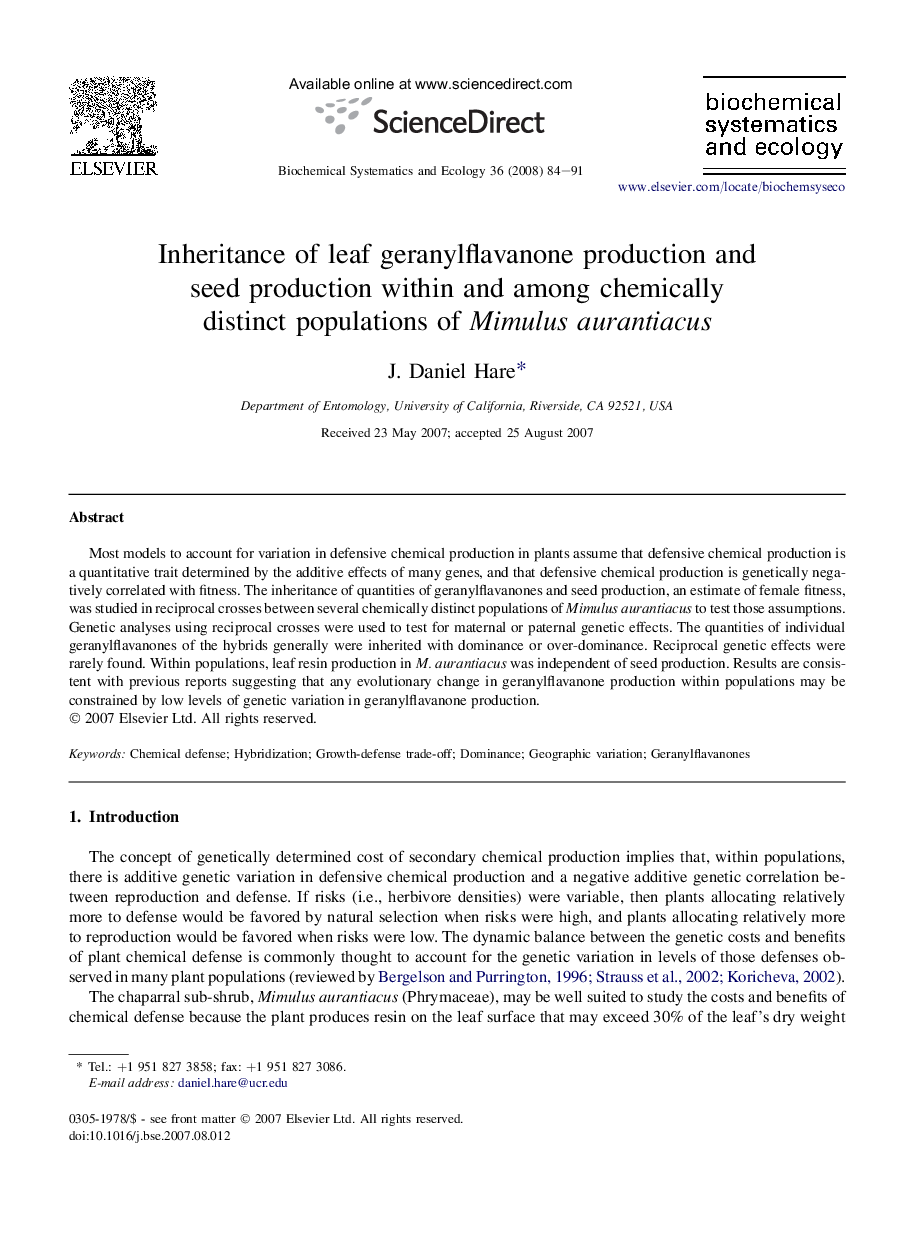| Article ID | Journal | Published Year | Pages | File Type |
|---|---|---|---|---|
| 1352381 | Biochemical Systematics and Ecology | 2008 | 8 Pages |
Abstract
Most models to account for variation in defensive chemical production in plants assume that defensive chemical production is a quantitative trait determined by the additive effects of many genes, and that defensive chemical production is genetically negatively correlated with fitness. The inheritance of quantities of geranylflavanones and seed production, an estimate of female fitness, was studied in reciprocal crosses between several chemically distinct populations of Mimulus aurantiacus to test those assumptions. Genetic analyses using reciprocal crosses were used to test for maternal or paternal genetic effects. The quantities of individual geranylflavanones of the hybrids generally were inherited with dominance or over-dominance. Reciprocal genetic effects were rarely found. Within populations, leaf resin production in M. aurantiacus was independent of seed production. Results are consistent with previous reports suggesting that any evolutionary change in geranylflavanone production within populations may be constrained by low levels of genetic variation in geranylflavanone production.
Related Topics
Physical Sciences and Engineering
Chemistry
Organic Chemistry
Authors
J. Daniel Hare,
